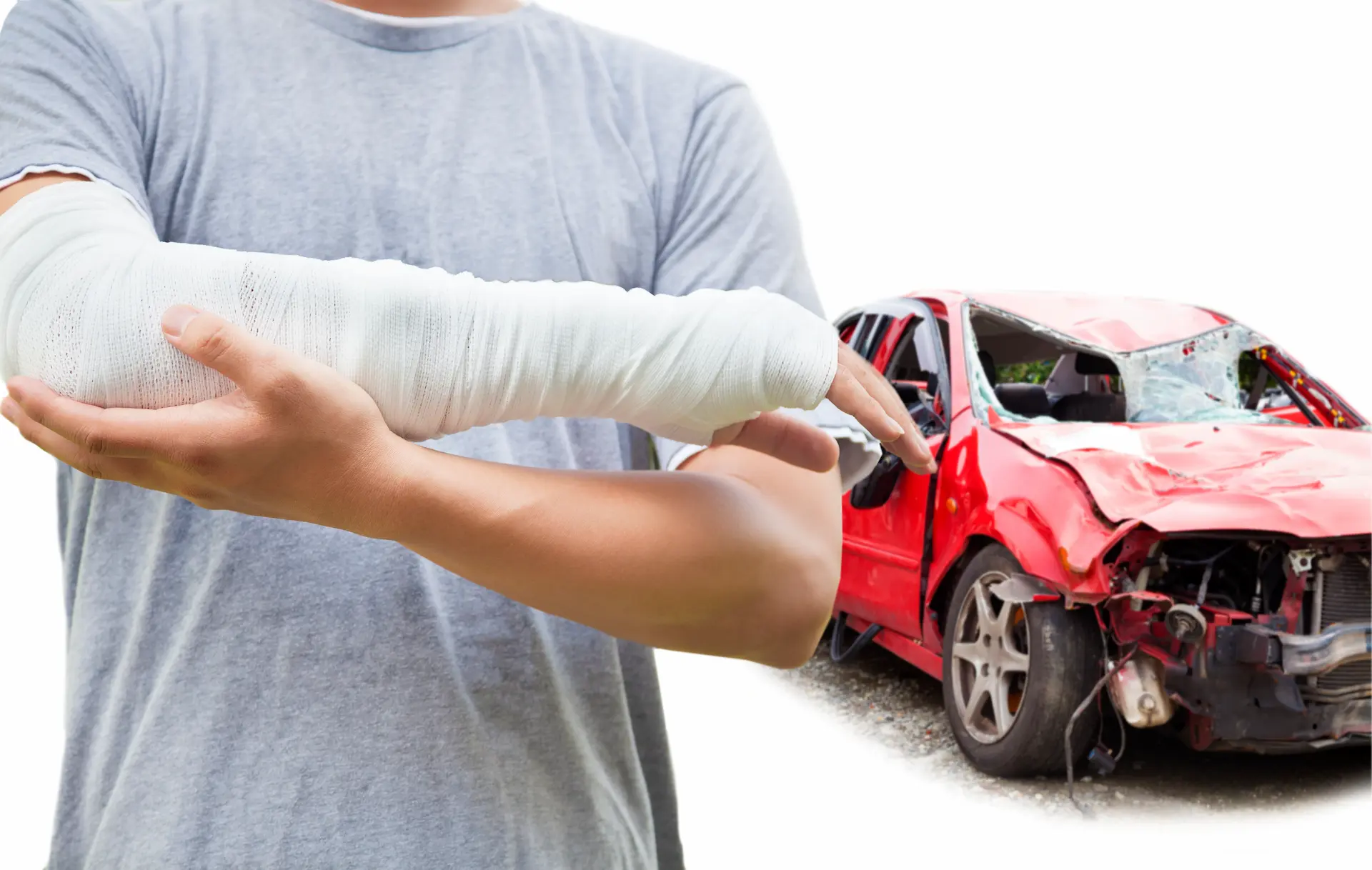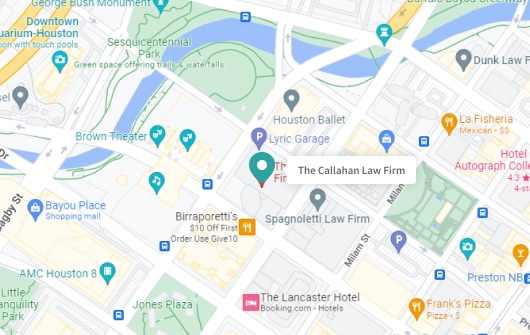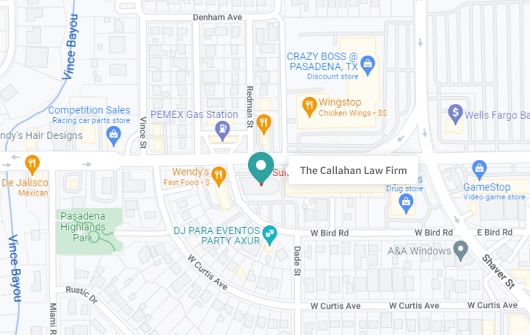Broken Bones and Fractures from Car Accidents in Houston

Car accidents are a leading cause of trauma and injury, with broken bones being among the most common outcomes for those involved. The force exerted during a collision can easily fracture bones, ranging from minor breaks that may heal relatively quickly to severe fractures requiring surgical intervention and long-term rehabilitation.
Physically, these injuries can lead to significant pain, reduced mobility, and a lengthy recovery period, leading to significant financial strain due to medical bills and lost income. Emotionally, coping with the aftermath of a car accident and the challenges of recovery can be stressful and mentally taxing.
For those who have experienced broken bones from a car accident, seeking legal assistance from a personal injury lawyer can be a critical step. A knowledgeable attorney can help determine if someone else is responsible for your accident and what compensation you are entitled to. If you’ve been in an accident and need assistance, don’t hesitate to contact The Callahan Law Firm to schedule a no-cost consultation.
Types of Fractures Common in Car Accidents
Car accidents can result in a variety of bone fractures due to the high-impact forces involved. Here are the main types of fractures often seen in car accidents:
- Simple Fractures: Also known as closed fractures, these occur when the bone is broken but does not puncture the skin. Simple fractures vary in severity but generally have a more straightforward treatment and recovery process compared to other types of fractures.
- Compound Fractures: In a compound or open fracture, the broken bone pierces through the skin, creating an open wound. This type of fracture is particularly serious due to the risk of infection and often requires surgical intervention to repair. The recovery period can be extensive and complicated.
- Comminuted Fractures: This type of fracture occurs when the bone is shattered into three or more pieces. The force required to cause a comminuted fracture is usually substantial, making it a possible injury in high-speed car accidents. Treatment typically involves surgery, including the potential use of pins, plates, or screws to hold the bone fragments together as they heal.
- Stress Fracture or Hairline Fracture: This type of fracture occurs when a small crack forms in a bone, often due to repetitive force or overuse. In the context of car accidents, stress or a hairline fracture from a car accident can result from the sudden and intense forces exerted on the body during impact, causing the bones to crack under the stress rather than break completely.
Each type of fracture requires a specific approach to treatment and rehabilitation, with the goal of restoring function and minimizing long-term impact. For those injured in car accidents, understanding the nature of their fractures is crucial for effective medical care and for pursuing appropriate compensation through personal injury claims.
Commonly Affected Bones in Car Accidents
Car accidents exert tremendous force on the body, often resulting in broken bones. Understanding the most common bones broken in car accidents can help involved parties comprehend the extent of their injuries and the potential challenges they may face during recovery.
- Hands, Fingers, and Wrists: These are often injured as occupants instinctively brace for impact, leading to fractures that can impair daily activities and require surgical intervention in severe cases.
- Feet, Toes, and Ankles: Similar to the hands, feet and ankles absorb significant force, resulting in fractures that may affect mobility and necessitate a lengthy rehabilitation process.
- Arms and Legs: The long bones of the arms and legs are vulnerable to fractures in car accidents due to direct impacts of the body being thrown against interior vehicle surfaces, leading to complex injuries that may require surgery.
- Ribs: Rib fractures are common due to the compression of the body against seat belts or the steering wheel, causing pain and potentially complicating breathing, which can pose serious health risks.
- Pelvis: A pelvic fracture from a car accident often results from high-impact collisions, requiring immediate medical attention and, in many cases, surgical repair.
- Spinal Fractures: The spine can be fractured or dislocated in a car accident, leading to severe consequences, including paralysis, requiring specialized and long-term medical care.
- A compression fracture from car accidents is common as well, which occurs when the spine is subjected to extreme stress and pressure during the impact of the collision. This forceful impact can cause the vertebrae to compress or collapse under a sudden and intense load.
- Clavicle: The clavicle (collarbone) is particularly prone to fractures due to its location and the force of seat belts in a collision, usually healing with immobilization but sometimes necessitating surgery for complex breaks.
- Tibial Plateau Fracture: A tibial plateau fracture after a car accident is a break at the top of the shinbone, impacting the knee’s stability and alignment. It occurs due to direct impact to the knee or strong forces during collisions.
- Femur Fracture: A femur fracture in a car accident is a severe injury resulting from high-impact collisions that exert tremendous force on the thigh bone, the body’s longest and strongest bone. These fractures often require significant medical intervention, including surgery, due to the femur’s critical role in supporting body weight and mobility.
- Sternum Fracture: The sternum (breastbone) can be fractured by direct impact with the steering wheel or seatbelt. While often healing on its own, a sternum fracture from a car accident can be painful and restrict movement.
- Scaphoid Fracture: This occurs when the small bone in the wrist, known as the scaphoid, is broken or fractured, typically due to a strong impact. A scaphoid fracture in a car accident often happens when a person instinctively extends their hand to brace for impact during a collision, leading to direct trauma or excessive force on the wrist.
Understanding the commonly affected bones and the potential severity of these injuries is crucial for those injured in car accidents as they navigate their recovery and seek appropriate compensation.
Medical Treatment and Recovery
Following a car accident, the path to recovery from broken bones or other injuries involves both immediate and long-term medical treatments, significantly impacting an injured party’s daily life and ability to work.
Emergency Treatments and First Aid
Immediately after an accident, emergency treatment focuses on stabilizing the injured party, assessing the severity of injuries, and preventing further harm. This may include immobilizing fractures, working on pain relief, and performing surgeries if necessary to repair broken bones or address internal injuries. Prompt medical attention is crucial to minimize complications and set the foundation for recovery.
Long-term Medical Care and Rehabilitation
After the initial emergency care, the focus shifts to long-term recovery, which may involve a combination of physical therapy, follow-up surgeries, and ongoing medication to manage pain and aid the healing process.
This phase is critical for helping the injured person regain as much independence and quality of life as possible.
Impact on Daily Life and Work
The repercussions of a car accident extend beyond physical injuries, affecting the injured person’s daily life and their capacity to work. Recovery periods can lead to prolonged absences from employment, while severe injuries might result in permanent disabilities requiring changes in job roles or career paths.
The psychological impact, including dealing with trauma, anxiety, and the stress of medical expenses, can further complicate the return to normalcy.
The importance of comprehensive medical care, the support of a strong rehabilitation program, and the resilience of the injured party as they work towards reclaiming their independence and well-being is essential.
Legal Rights and Compensation You May Receive for Broken Bone Injuries in Houston
In Houston, as in the rest of Texas, individuals injured in car accidents have the right to seek compensation for their injuries if another party’s negligence caused the accident.
This involves proving that the other party failed to exercise reasonable care, directly leading to the accident and your subsequent injuries. Knowing your rights is the first step toward recovery, as it sets the groundwork for pursuing legal action.
Types of Compensation Available for Broken Bone Injuries
Those injured in car accidents in Houston can seek various types of compensation, including:
- Medical Expenses
- Lost Wages
- Pain and Suffering
- Mental Anguish
- Property Damage
The exact type and amount of compensation you can recover is dependent on the specifics of your case and your attorney’s ability to negotiate or litigate your claim.
The Role of Negligence in Car Accident Claims
Establishing negligence is central to any car accident claim in Houston. This means demonstrating that the responsible party breached their duty of care, directly causing the accident and your injuries.
It’s also essential to understand how your own negligence can play a role in the legal proceedings following an accident. When it comes to car accidents and other personal injury claims, Texas follows modified comparative negligence, which means that compensation can be reduced if you are found to be partly at fault for the accident. You cannot recover damages if you are more than 50% at fault.
Given the complexities of proving negligence and securing fair compensation, working with an experienced personal injury lawyer in Houston is highly recommended.
When To File A Car Accident Claim
Deciding when to file a car accident claim is a crucial step in the aftermath of a collision, as it can significantly affect your ability to secure compensation for your injuries and other losses. Understanding when this step becomes necessary will help ensure you get what you’re entitled to. Here’s an overview of the times you should strongly consider filing a car accident claim:
- You’ve Sustained Injuries: If you or passengers in your vehicle have been injured in the accident, filing a claim can help cover medical expenses, rehabilitation costs, and compensation for pain and suffering.
- There’s Significant Vehicle Damage: For repairs or replacement of your vehicle due to significant damage from the accident, a claim can help recover these costs.
- Loss of Income: If your injuries from the accident prevent you from working, a claim can compensate for lost wages and potential future earnings.
- The Other Driver Is At Fault: If evidence suggests the other driver’s negligence or violation of traffic laws caused the accident, filing a claim with their insurance company is advisable. In some cases, you may also decide to file a personal injury lawsuit against the driver.
- Long-Term or Permanent Injuries: For injuries that result in long-term disability or permanent impairment, a claim can provide compensation for ongoing care and quality of life adjustments.
In any of these scenarios, consulting with a personal injury lawyer can provide valuable insight and guidance on proceeding with your car accident claim.
Why Hire A Houston Personal Injury Lawyer After A Car Crash That Causes Fractures or Broken Bones?
Hiring a Houston personal injury lawyer after a car crash that results in fractures or broken bones is a crucial step toward securing the compensation and support necessary for your recovery.
The aftermath of such an accident can be overwhelming, with medical treatments, financial pressures, and legal complexities all demanding attention. A skilled personal injury lawyer can alleviate these burdens by providing guidance and advocacy. Here’s what a car accident lawyer from The Callahan Law Firm can do for you:
- Navigate the Legal Process: Personal injury law is complex, with numerous deadlines, procedures, and legal standards that must be met. Our Houston personal injury lawyers have the knowledge and experience to navigate this process efficiently, ensuring that your claim is filed correctly and within the statutory deadlines. We understand Texas law and how it applies to your case, helping you avoid pitfalls that could jeopardize your claim.
- Gather Evidence and Building a Strong Case: Proving negligence and the extent of your injuries requires substantial evidence. Our lawyers will thoroughly investigate your accident, gathering medical records, accident reports, witness statements, and expert testimony when neccessar. We’ll do everything in our power to build a compelling case demonstrating the other party’s liability and the full impact of your injuries.
- Negotiate with Insurance Companies: Insurance companies often seek to minimize payouts, offering settlements that fall short of covering the true cost of your injuries. We will negotiate on your behalf, using our experience to counter low offers and fight for a settlement that adequately compensates for your medical expenses, lost wages, pain and suffering, and other damages. If a fair settlement cannot be reached, our legal team is always prepared to take your case to trial, advocating for your rights in court.
Dealing with fractures from a car crash involves not just physical recovery but also the challenge of securing the financial resources necessary for that recovery. Hiring our Houston personal injury lawyers ensures you have a dedicated advocate on your side, working tirelessly to secure the compensation you deserve.
If you’ve suffered broken bones or fractures in a car crash, don’t navigate this complex journey alone. Contact The Callahan Law Firm to schedule a free consultation with a car accident lawyer. Our support can make all the difference in your recovery and future well-being, offering you peace of mind during a challenging time.
FAQ
Does a broken bone count as a serious injury?
A broken bone is considered a serious injury, especially if it impacts your mobility, requires surgery, or leads to long-term health issues. The severity can vary depending on the fracture’s location, type, and complications that may arise, such as infections or nerve damage.
What is the most common vehicular fracture?
The most common vehicular fractures include pelvic bone fractures, which are thought to be prevalent due to the significant force exerted in car accidents. Other common fractures involve the fibula and femur, as the impact can crush the legs. The clavicle, known for its fragility, is also frequently fractured in auto collisions.
Additionally, facial bones such as the nose, jaw, cheekbones, and orbital bones around the eyes are highly susceptible to fractures, often resulting from the force of airbag deployment or direct impact with the dashboard or steering wheel.
What to do if you have a broken bone injury after a car crash?
If you’ve been injured in a car accident, you should consider taking the following steps:
- Seek immediate medical attention to assess and treat the injury.
- Document your injuries and any treatments received.
- Keep a record of any expenses related to your injury.
- Avoid discussing fault or details of the accident with insurance adjusters.
- Consult with a personal injury lawyer to understand your rights and explore options for compensation.











